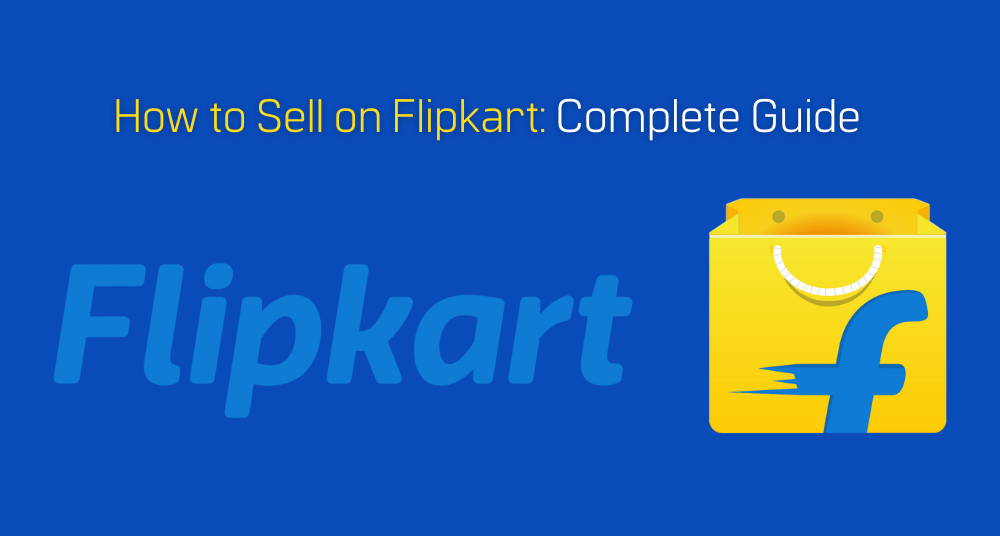Flipkart remains one of India’s top e-commerce marketplaces, and selling on it can be a powerful way to scale your business. For entrepreneurs, small businesses, or brands who want to tap into India’s vast online customer base, Flipkart offers logistics, reach, and infrastructure that make it a viable platform for serious growth.
This guide breaks down how to register as a Flipkart seller in 2025 — step by step — including eligibility, documentation, fees, fulfillment options, onboarding tips, and advanced growth strategies.
Why Sell on Flipkart in 2025?
Before diving into the registration process, it’s important to understand what makes Flipkart a compelling platform for sellers in 2025:
- Large Customer Base: Flipkart has millions of active customers across India.
- Highly Trusted Marketplace: As one of India’s oldest and largest online marketplaces, Flipkart continues to build trust with customers.
- Scalable Logistics Options: Through its in-house logistics and partner ecosystem, Flipkart makes delivery manageable for sellers.
- Growing Support for MSMEs: Flipkart is increasingly promoting small and medium sellers, especially regional and value-first brands.
- Zero Commission for Some Products: As of November 2025, Flipkart announced zero commission on items priced below ₹1,000 for eligible sellers.
- Seller-centric Initiatives: Flipkart hosts seller summits and provides onboarding support to sellers.
These advantages make Flipkart a worthy choice for both new sellers and established businesses.
Eligibility Criteria: Who Can Sell on Flipkart
To become a Flipkart seller in 2025, you should meet the following basic criteria:
- You should have a valid GSTIN, especially if selling non-exempt products.
- PAN card or business PAN is needed.
- A bank account for receiving payments.
- Address proof for your business or store location.
- Business identity proof (individual, proprietorship, company, or partnership).
Flipkart also supports artisan or smaller-scale sellers under certain programs. For example, artisans can apply through a different path.
Documents Required for Flipkart Seller Registration
Having the correct documents ready before you begin the registration process makes things smoother. Here’s a checklist of what you’ll need:
| Document Type | What Flipkart Requires |
| Identity Proof | PAN Card, Aadhaar or other government ID. |
| Address Proof | Utility bill, rental agreement, or business address proof. |
| Business Proof | GST Certificate (for most categories). |
| Bank Proof | Cancelled cheque or bank statement to verify bank account. |
| Signature / E-Sign | Flipkart asks for a signature when you register. |
Additional documents may be needed depending on your product category:
- FSSAI license for food items.
- Brand authorization letter if you are reselling branded products.
- Import license or BIS certification for certain categories.
Step-by-Step Flipkart Seller Registration Process (2025)
Here’s the detailed process to become a Flipkart seller in 2025:
Step 1: Go to the Flipkart Seller Hub
Visit the Flipkart Seller Registration page: seller.flipkart.com
Click “Start Selling”.
Step 2: Enter Basic Business Details
- Enter your mobile number and verify it with an OTP.
- Provide your business or personal name, address, GSTIN (if applicable), and business type (proprietorship/LLP/company).
- Provide pickup address details, which Flipkart will use for courier pickups.
Step 3: Upload Documents
- Identity proof (PAN, Aadhaar)
- Address proof
- Business proof (GST certificate)
- Bank account proof (cancelled cheque)
- Signature / e-signature
Flipkart will review these documents, which may take a few days.
Step 4: Bank Verification
Once you upload bank details, Flipkart verifies them. The name on the bank account must match your GST or business name.
Step 5: KYC / Compliance Verification
Flipkart may conduct KYC via video or physical address verification. This ensures that the sellers are legitimate, and reduces fraud risk.
Step 6: Seller Dashboard Activation
After your documents are approved, your Flipkart Seller account becomes active. You will get access to the Seller Hub (dashboard).
Step 7: Listing Your Products
- Navigate to the Catalog / Add Products section.
- Choose whether you’re listing existing catalog products (already on Flipkart) or adding entirely new ones.
- Provide product name, SKU, price (MRP), stock, description, images, and variants (size, color).
- For new listings, ensure your product images and descriptions are high quality and compliant with Flipkart’s guidelines.
Step 8: Inventory & Shipping Setup
Once listing is done, map your inventory to your pickup address. Choose whether to use Flipkart’s logistics (Flipkart Advantage) or your courier partner.
Step 9: Go Live & Start Receiving Orders
Once Flipkart approves your listings, your products will go live. You can start receiving orders.
Flipkart Seller Fees & Commission Structure (2025)
Understanding the fee structure is critical to your profitability on Flipkart. Here’s an up-to-date breakdown:
Commission / Referral Fee
- Flipkart charges a referral fee on every sale. The percentage depends on the category.
- According to EcomGrowSupport, for 2025, commission ranges are approximately:
- Fashion: ~12–20%
- Electronics/accessories: ~5–13%
- Home & Kitchen: ~10–17%
Fixed Fee (Per Order)
- A per-order fixed fee is charged by Flipkart, based on the order’s selling price.
- Example from EcomGrowSupport: for items up to ₹250, the fixed fee could be ~₹5, increasing with price.
Collection Fee
- This is basically a payment processing fee for payment methods (cards, UPI). As per EcomGrowSupport, it’s around 2%.
Shipping Fee
- Sellers pay shipping charges depending on the delivery zone (local, zonal, national).
- As per Corpbiz, shipping charge starts at ₹30 for smaller / local packages.
GST on Fees
- All of these fees attract 18% GST, which is something sellers need to account for.
Updated Commission Structure (2025)
- Flipkart’s 2025 update: For eligible sellers listing products under ₹1,000, the commission fee is now zero for some categories.
- This move is reportedly aimed at supporting small and medium sellers, especially in value-led categories.
Fulfillment Options on Flipkart for Sellers
How you fulfill your orders on Flipkart determines your shipping cost, order speed, and customer experience. Here are the main options:
Option 1: Flipkart Advantage (Flipkart’s Logistics)
- Flipkart picks up the item from your warehouse or pickup address.
- Flipkart handles delivery, tracking, and returns.
- Good for scalability and reliability.
- May cost more but ensures better delivery speed and reach.
Option 2: Self-Ship
- You pack and ship orders using a courier partner of your choice.
- More control over logistics.
- Useful for niche products or large items.
- Some sellers on Reddit report that self-ship is disabled by default:
“I’ve been trying to get the Self-Ship service enabled … every time I reach out … they keep insisting … they have completely disabled this option.”
- Self-ship gives more control but may involve more operational hassle.
Flipkart Seller Dashboard: Key Features
Once you’re live as a Flipkart seller, the Seller Hub dashboard is your control center. Here’s what you can do:
- Order Management: View new orders, manage dispatch, and mark shipments.
- Inventory Management: Keep track of stock, make updates, and handle stockouts.
- Payments & Settlements: See your earnings, deductions, and expected payouts.
- Reports & Analytics: Analyze order trends, return rates, and performance metrics.
- Marketing Tools: Access Flipkart Ads, deals, and offer management.
- Account Health: Track seller performance based on cancellation rate, return rate, late shipment, etc.
Tips to Succeed and Scale as a Flipkart Seller
Here are practical strategies to make your Flipkart selling business strong:
Build a Quality Catalog
- Use high-resolution product images (multiple angles).
- Write SEO-optimized titles including brand, model, and main keyword.
- Use bullet points for key features.
- Add variants (size, color) if relevant.
Price Competitively
- Factor in Flipkart’s commission, shipping, and fixed fee.
- Because of the new zero-commission model for products < ₹1,000, consider competitively pricing your value SKUs.
- Use periodic promotions and Flipkart offers to drive volume.
Use Flipkart Advantage if Possible
- For scaling, using Flipkart’s logistics ensures better delivery and a smoother customer experience.
- Helps in winning “Buy Box” equivalent and trust.
Maintain Strong Inventory
- Ensure your stock list is up to date.
- Avoid out-of-stock situations which can harm performance.
- Synchronize your warehouse or pickup point with inventory in Seller Hub.
Manage Returns Smartly
- Understand Flipkart’s return policy.
- Prepare for returns cost and re-stocking.
- Use analytics to understand why products are being returned and rectify issues.
Focus on Seller Metrics
- Keep cancellation, return, and late shipment low.
- Use the Seller Dashboard to monitor order defect rate and other KPIs.
- Good metrics boost your visibility in the marketplace.
Attend Flipkart Seller Events
- Flipkart runs Seller Summits to train and onboard sellers.
- These events are a good way to learn advanced strategies and network with other sellers.
Use Ads & Promotions
- Use Flipkart’s marketing tools: sponsored ads, deal campaigns, banner promotions.
- Good for building early momentum, especially when launching a new SKU.
Understand Flipkart’s Financial Cycle
- Payments: Flipkart typically settles seller payments in 7–15 days after successful delivery.
- Maintain clean, accurate invoicing and bank account details to avoid payout issues.
Pros & Cons of Selling on Flipkart in 2025
| Pros | Cons |
| Massive customer base across India | Commission structure can be high for certain categories |
| Good logistics support via Flipkart Advantage | Shipping fees and collection fees apply |
| Zero commission on eligible SKUs below ₹1,000 | Some sellers report lack of transparency in rate card |
| Robust seller dashboard for analytics & growth | Self-ship option may not be enabled for all sellers |
| Training + support via Flipkart Seller Summits | Returns and account health metrics need careful handling |
Common Mistakes to Avoid When Selling on Flipkart
To ensure a smooth journey on Flipkart, avoid these common pitfalls:
- Incomplete Documentation: Not uploading or verifying GST, bank, or address proof.
- Poor Product Listings: Low-quality images, no descriptions, or missing attributes.
- Ignoring Inventory Sync: Leads to cancellation or delayed dispatch.
- Not Accounting for Fees: Failing to factor in commission, fixed fee, or shipping costs.
- Neglecting Customer Service: Delayed responses, bad packaging, and return mishandling damage ratings.
- Underutilizing Marketing Tools: Not using Flipkart Ads or promotional campaigns.
- Lack of Metric Monitoring: Ignore order defect, cancellation, or delivery performance.
Flipkart Registration for Special Seller Categories
- Artisans: Flipkart supports artisan registration; there’s a tailored onboarding for small-scale craft makers.
- MSMEs & SHGs: Flipkart is partnering with programs like Walmart Vriddhi to onboard Self-Help Groups and micro-entrepreneurs.
- New Sellers: Flipkart’s New Seller Success Program offers onboarding support to new sellers.
These programs make it easier for smaller, local businesses to join the platform.
Flipkart Payment Cycle & Settlement
Understanding how you get paid is very important:
- Payout Timeline: Flipkart generally settles payments 7–15 days after the order is successfully delivered.
- Settlement Report: You can view a detailed settlement report showing:
- Total sales
- Commission & fees deducted
- Shipping / fixed fees
- Returns / refunds
- Net payout
- Bank Verification: Make sure your bank account name matches your GST or legal name, or payments may get delayed.
Recent Updates & Trends to Be Aware of (2025)
- As of November 2025, Flipkart has announced a zero-commission model for eligible sellers listing products priced below ₹1,000.
- Flipkart is building stronger support for micro-entrepreneurs, including training programs and seller summits.
- Flipkart’s logistics strength continues to scale, making it more attractive for sellers with high volume SKU-based inventory.
Frequently Asked Questions (FAQ)
Q1. Is Flipkart seller registration free?
Yes. Flipkart does not charge any upfront registration fee.
Q2. Do I need GST to sell on Flipkart?
Yes, for most categories. GST is mandatory for many sellers.
Q3. How long does Flipkart verification take?
It typically takes 2–7 business days for document verification and account approval.
Q4. When do I get paid by Flipkart?
Payments are settled 10–15 days after successful delivery of an order.
Q5. Can I ship using my own courier?
Yes — you can choose self-ship, but many sellers prefer Flipkart Advantage for smoother logistics.
Q6. Are there any special programs for small sellers?
Yes — Flipkart supports artisans, SHGs, and small MSMEs through initiatives and summits.
Conclusion: Is Flipkart the Right Marketplace for You?
Selling on Flipkart in 2025 is a strong choice for a wide range of businesses — from established brands to small entrepreneurs, artisans, and MSMEs. The platform’s huge customer base, logistics options, and seller support programs make it a valuable e-commerce channel.
Boost your Flipkart sales with professional Flipkart Seller Account Management Services. We handle listings, inventory, pricing, and performance optimization, ensuring your store thrives while you focus on growing your business efficiently.
Key Takeaways:
- No upfront seller registration fee
- Fees are charged per transaction (commission, fixed, shipping)
- Zero commission on some sub-₹1,000 SKUs for eligible sellers
- Document verification and onboarding are straightforward
- Multiple fulfillment options — choose what best suits your business
- Regular payouts and a robust seller dashboard
- Growth support via seller training, summits, and marketing tool






What do you think?
It is nice to know your opinion. Leave a comment.